In order for school improvement efforts to be successful, schools need teachers and leaders who are willing and able to execute the improvement strategy (Player, Hambrick Hitt, & Robinson, 2014). That is, low performing schools must have the ability to recruit, develop, retain, and sustain talented teachers and administrators, as well as to remove those who do not have the will, or the skill, to meet performance expectations after receiving adequate support.
Evidence from previous school improvement initiatives suggests that the most successful efforts often involve the most dramatic reforms, especially around staffing. For example, several studies of School Improvement Grants (SIG) suggest the largest student achievement gains were made in sites adopting the “turnaround” model, which prescribed the most intensive practices with regard to replacing staff (Dee, 2012; Dragoset et al., 2017).
But talent management for school improvement is not solely a matter of “weeding out bad teachers.” It’s about creating conditions where all staff, especially teachers, can rapidly increase their effectiveness through meaningful professional learning aligned with improvement efforts, receive actionable feedback based on data, and take advantage of increased time for collaboration and instructional coaching. The Wallace Foundation (Kutash et al., 2010) emphasizes that professional learning “must be aimed at breaking established routines and norms, changing entrenched expectations, providing new instructional approaches, and creating and enforcing a school culture of high expectations for all students.” (p.36) In addition, The Center for School Turnaround (2014) recommends “leveraging high-performing teachers” so that their effects can reach beyond their classrooms.
Districts play a pivotal role in creating policies and structures that allow schools to manage teacher and administrator talent. For example, they can be more intentional about selecting and training principals who can serve as “turnaround” leaders, redeploy the most talented teachers and leaders to targeted schools, and provide principals with the flexibility to make necessary staff changes (Player, Hambrick Hitt, & Robinson, 2014; Council of the Great City Schools, 2015).
In many SIG schools, district and union leaders have written agreements to better support low performing schools. Among the most successful agreements are those that:
- include provisions for teachers not willing or able to work in an intensive improvement environment to leave
- provide staffing priority for the school(s)
- implement mutual consent placement, so that both a hiring principal and a prospective teacher must agree to the teacher’s appointment to the building
In general, districts have to re-imagine and re-think the way they approach staffing at low performing schools and be willing to provide additional resources to meet the structural challenges these schools face. One strong example that has been well documented took place in Montgomery County Maryland where the district intentionally differentiated resources and supports for the highest need schools (Elmore, Thomas, Cheek Clayton 2006).
This is part of a series of articles detailing and providing examples from each of these components. Other articles in the series:
- Overview
- Supporting Structures and Systems
- Culture Shifts
- Turnaround Leadership
- Instructional Transformation
- Talent Management
By Bradford R. White, Interim Director, Illinois Education Research Council (IERC) and David Osta.
(The structure for these articles was informed by The Center on School Turnaround at WestEd’s system framework, Four Domains for Rapid School Improvement. To explore additional resources from CST go to – http://centeronschoolturnaround.org.)
Council of the Great City Schools (2015). School Improvement Grants: Progress Report from America’s Great City Schools. Retrieved from https://www.cgcs.org/cms/lib/DC00001581/Centricity/Domain/87/SIG%20Report%202015.pdf
Dee, T. (2012). School turnarounds: Evidence from the 2009 stimulus (No. w17990). National Bureau of Economic Research.
Dragoset, L., Thomas, J., Herrmann, M., Deke, J., James-Burdumy, S., Graczewski, C., Boyle, A., Upton, R., Tanenbaum, C., Giffin, J. (2017). School improvement grants: Implementation and effectiveness. Washington, DC: National Center for Education and Evaluation and Regional Assistance, Institute of Education Sciences, U.S. Department of Education.
Elmore, R., Thomas, D., & Cheek Clayton, T. (2006). Differentiated Treatment in Montgomery County Public Schools. Harvard Public Education Leadership Project. Retrieved from https://pelp.fas.harvard.edu/files/hbs-test/files/pel028p2.pdf
Kutash, J., Nico, E., Gorin, E., Rahmatullah, S., & Tallant, K. (2010). The school turnaround field guide. Wallace Foundation. http://www. wallacefoundation. org/pages/turnaround-actors-school-turnaround-field-guide.aspx.
Player, D., Hambrick Hitt, D., & Robinson, W. (2014). District Readiness to Support School Turnaround: A Users’ Guide to Inform the Work of State Education Agencies and Districts. Center on School Turnaround at WestEd.
